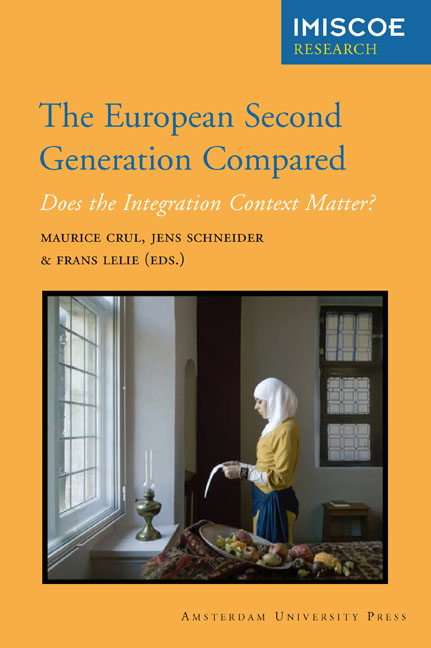Book contents
- Frontmatter
- Contents
- Acknowledgements
- 1 Introduction
- 2 Comparative Integration Context Theory: Participation and Belonging in Diverse European Cities
- 3 Research Methodology
- 4 The TIES Respondents and their Parents: Background Socio-Demographic Characteristics
- 5 School Careers Of Second-Generation Youth in Europe: Which Education Systems Provide the best Chances for Success?
- 6 Assessing the Labour Market Position and Its Determinants for the Second Generation
- 7 Union Formation and Partner Choice
- 8 Identities: Urban Belonging and Intercultural Relations
- 9 Ways of ‘being Muslim’: Religious Identities of Second-Generation Turks
- 10 Conclusions and Implications: The Integration Context Matters
- List of Contributors
- Other IMISCOE titles
9 - Ways of ‘being Muslim’: Religious Identities of Second-Generation Turks
Published online by Cambridge University Press: 09 January 2021
- Frontmatter
- Contents
- Acknowledgements
- 1 Introduction
- 2 Comparative Integration Context Theory: Participation and Belonging in Diverse European Cities
- 3 Research Methodology
- 4 The TIES Respondents and their Parents: Background Socio-Demographic Characteristics
- 5 School Careers Of Second-Generation Youth in Europe: Which Education Systems Provide the best Chances for Success?
- 6 Assessing the Labour Market Position and Its Determinants for the Second Generation
- 7 Union Formation and Partner Choice
- 8 Identities: Urban Belonging and Intercultural Relations
- 9 Ways of ‘being Muslim’: Religious Identities of Second-Generation Turks
- 10 Conclusions and Implications: The Integration Context Matters
- List of Contributors
- Other IMISCOE titles
Summary
Introduction
Large-scale immigration from Muslim-majority countries to highly secularised North-Western European societies has raised questions about how the European-born children of Muslim immigrants relate to and practise religion. On the one hand, second-generation Muslims are socialised into Islam within their immigrant families and communities. On the other hand, they grow up in societies where the majority is historically Christian, highly secularised and, in a post-9/11 era, increasingly anti-Islamic (Bruce 2011). By secularisation, we refer to a robust downward trend in the importance and impact of religion among Christian-majority populations (Gorski & Altinordu 2008). In European societies, secularism is a normative ideology that represents religiosity as a foreign, backward and/or dangerous force. Islam and its practitioners are particular targets of hostile public attitudes towards religion (Allen & Nielsen 2002). From a majority perspective, the religiosity of second-generation Muslims therefore appears to be a bright boundary, one setting them apart from the so-called mainstream and standing in the way of their successful integration (Fleischmann & Phalet 2012).
By contrast, from the minority perspective of immigrants and their children, religious traditions and ties are highly valued parts of cultural heritage and crucial sources of personal self-esteem, social support and cultural continuity in their socio-cultural environment (Bankston & Zhou 1995; Ebaugh & Chafetz 2000; Warner & Wittner 1998). Accordingly, Muslim immigrant parents purposefully and effectively transmit Islamic religious practices and beliefs to the next generation (Güngör, Fleischmann & Phalet 2011). The second generation is often highly committed to their Muslim identity, which is experienced as central to their sense of self-understanding (Duderija 2007; Fleischmann & Phalet 2012; Şirin, Bikmen, Mir, Fine, Zaal & Katsiaficas 2008; Verkuyten & Yıldız 2009).
In view of the contrasting orientations of Muslim immigrant communities and European receiving societies, this chapter asks how second-generation Turks in Europe negotiate their religious identities. We distinguish between attachment – i.e. the subjective importance of religion – and practice, such as praying or fasting. In addition, we examine how these identities relate to religious socialisation in immigrant families and communities as well as experiences of religious discrimination in receiving societies. Drawing on the TIES survey data, we investigate contextual variation in ways of ‘being Muslim’, namely, the different patterns of religious attachment and practices.
- Type
- Chapter
- Information
- European Second Generation ComparedDoes the Integration Context Matter?, pp. 341 - 374Publisher: Amsterdam University PressPrint publication year: 2013
- 1
- Cited by



